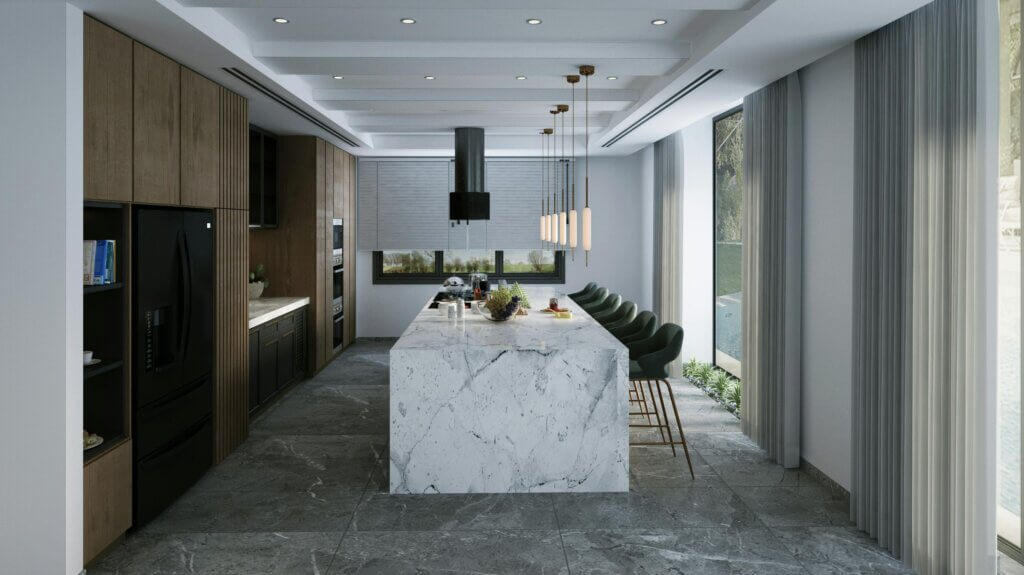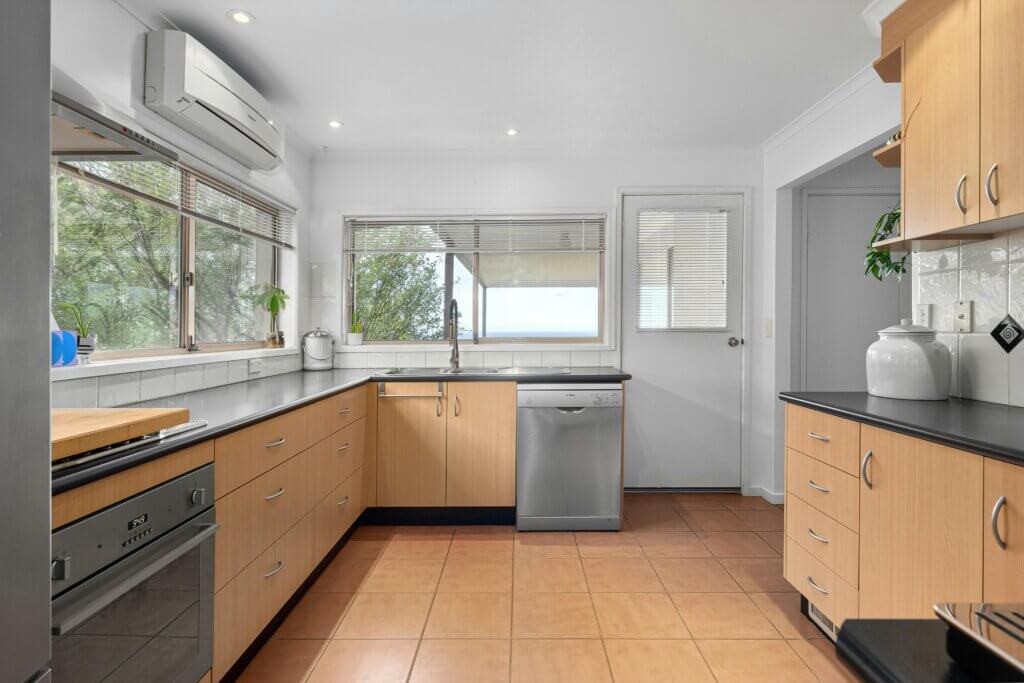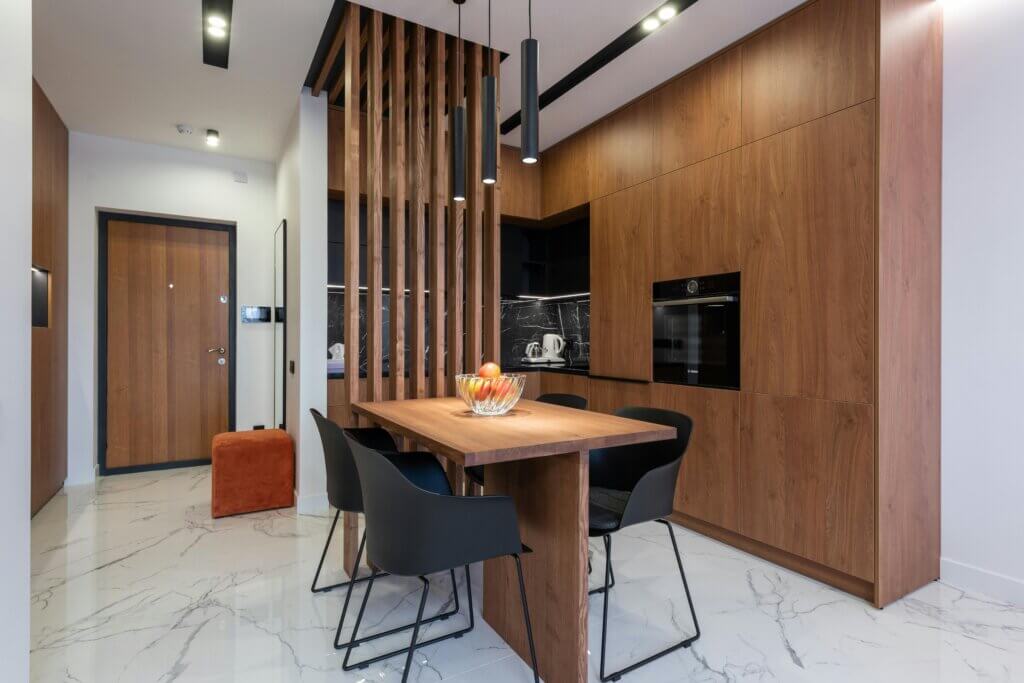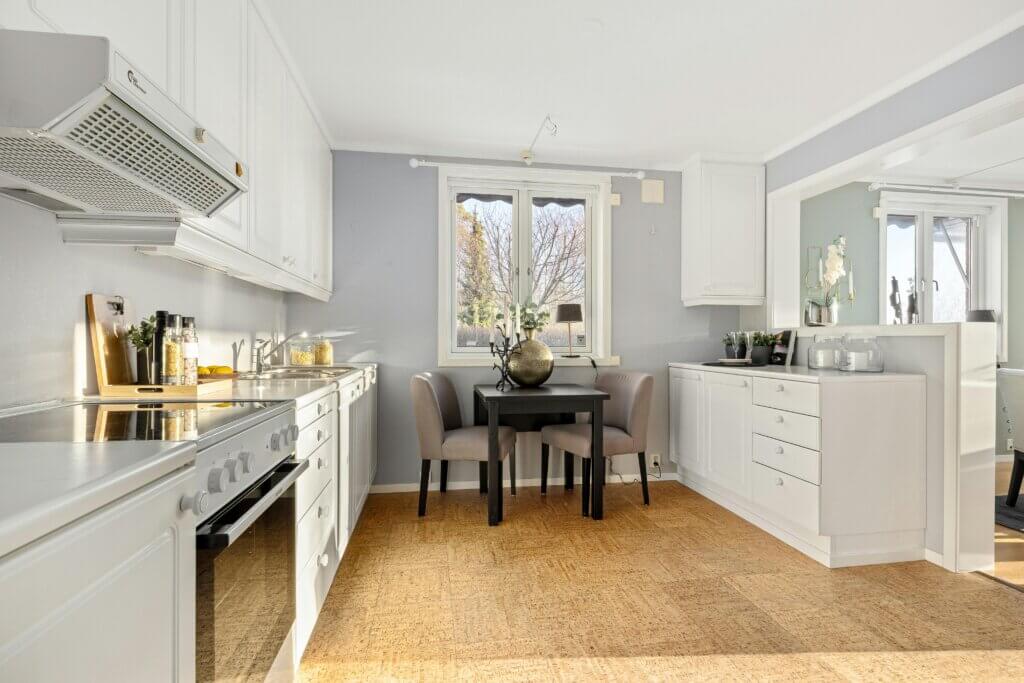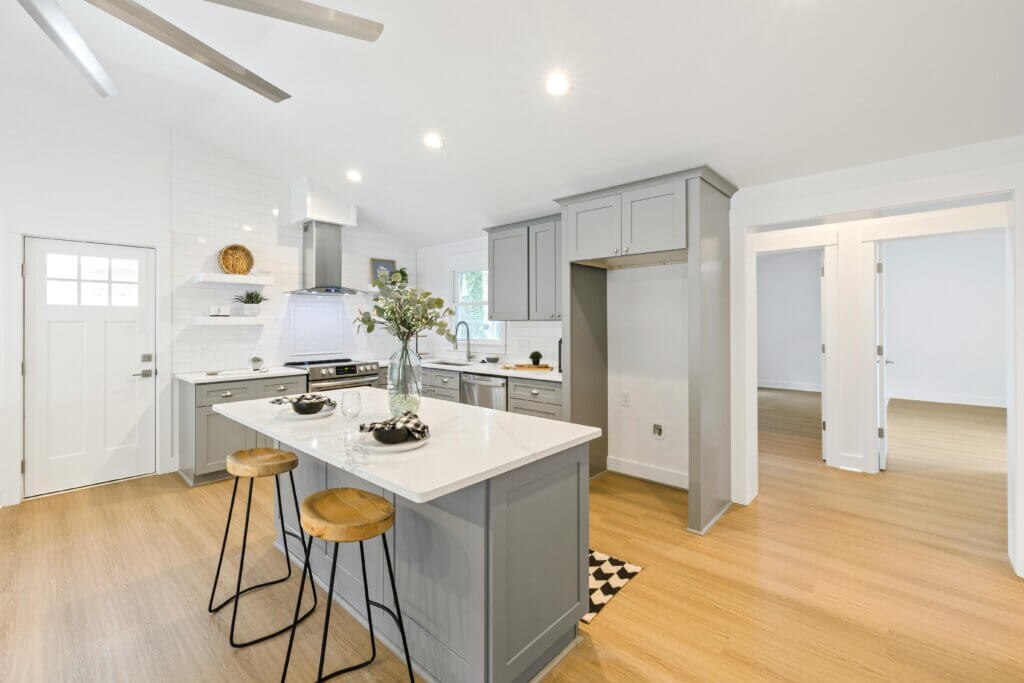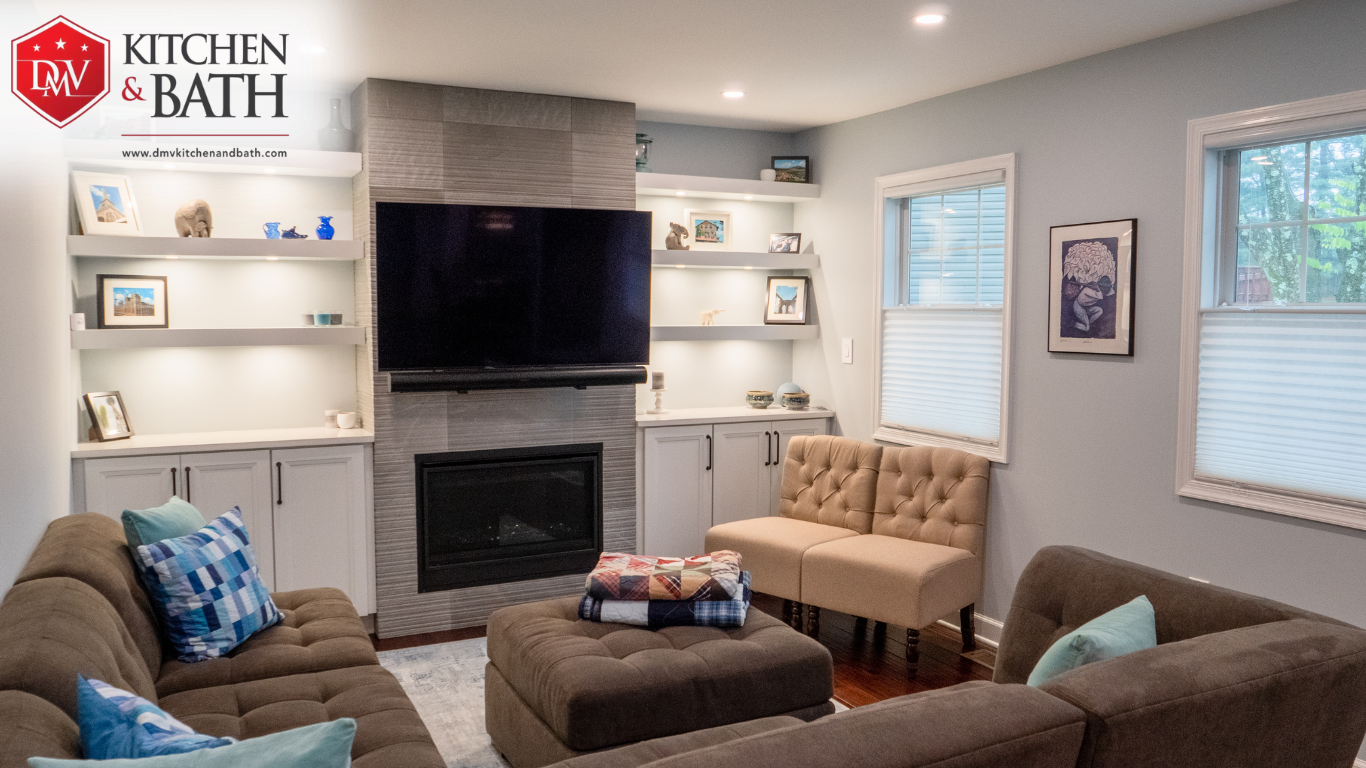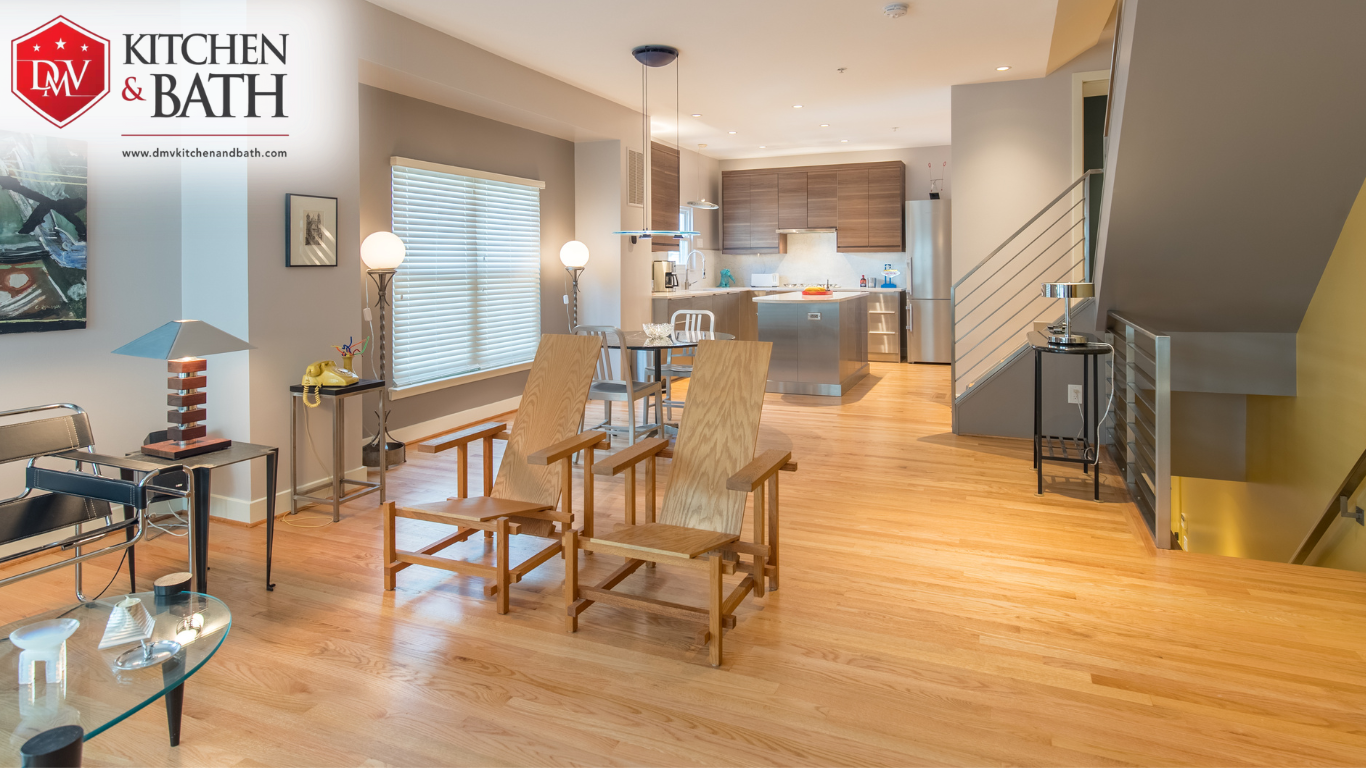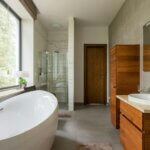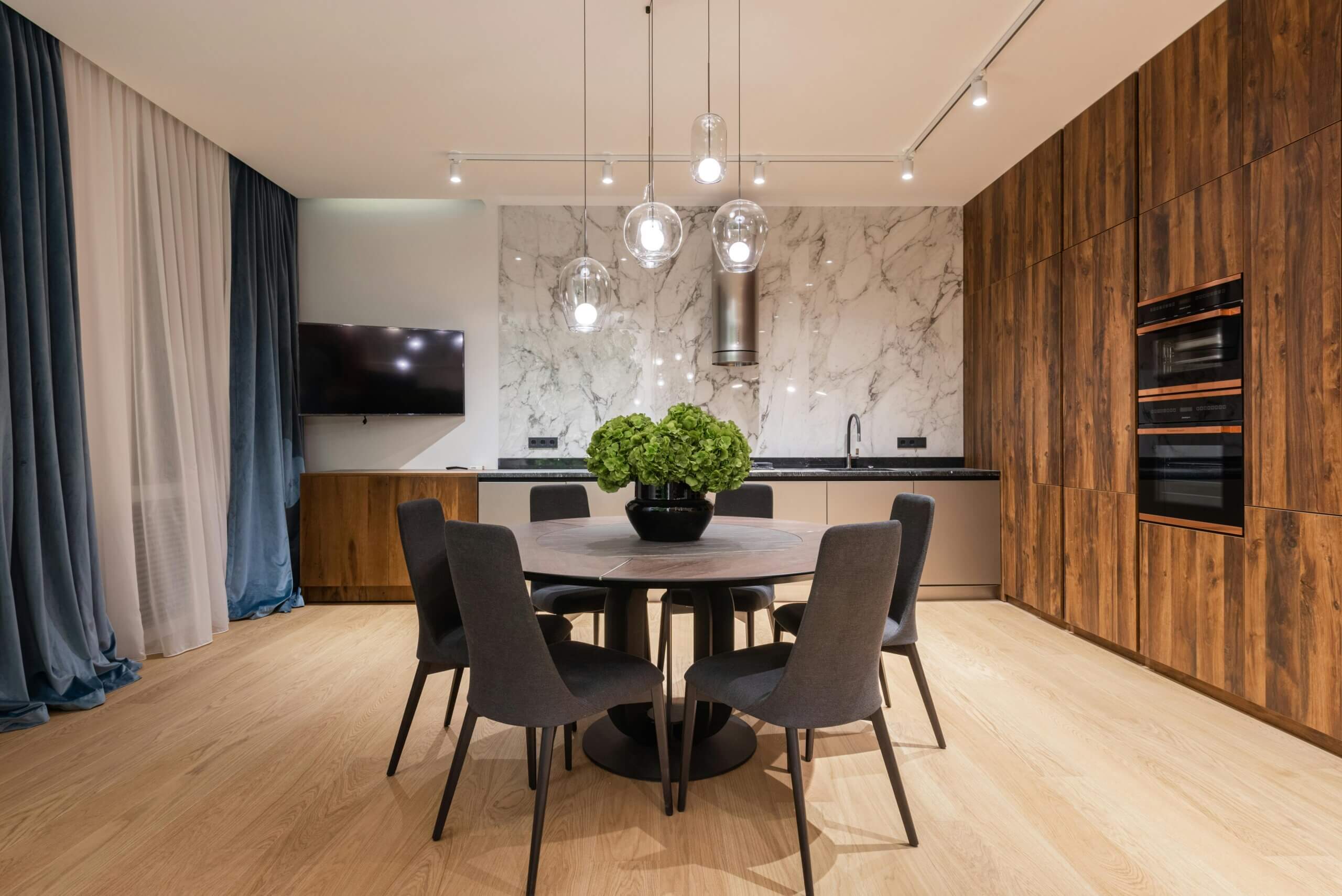
From Tile to Hardwood: Choosing the Perfect Kitchen Flooring10 min read
The kitchen is more than just a place to cook; it’s a gathering spot for family and friends, a haven for culinary creativity, and a canvas for design expression. When considering a makeover, flooring becomes a crucial element—a foundation upon which the entire room is built. Each material holds its allure, promising to breathe new life into your kitchen.
The right flooring can redefine your kitchen, infusing it with style, functionality, and personality. Imagine opting for the timeless charm of hardwood flooring. Rich, warm tones of oak or walnut create a sense of rustic elegance, inviting warmth, and sophistication into your culinary domain.
For a contemporary twist, envision sleek ceramic or porcelain tiles adorning your kitchen floor. From bold geometric patterns to understated neutrals, tiles offer endless possibilities for customization. Innovators might lean towards luxury vinyl flooring, a versatile choice that combines affordability with aesthetics.
The journey to transform your kitchen with flooring materials is one of discovery and creativity. Each material tells a story, weaving together elements of style, durability, and character. Whether you’re drawn to the classic allure of hardwood, the polished, contemporary flair of ceramic tiles, or the eco-conscious appeal of bamboo, the right flooring sets the stage for a kitchen that reflects your personality and lifestyle.
Contents
Key Considerations For Choosing Kitchen Flooring Material
Durability
Kitchen floors endure heavy foot traffic, spills, and potential impacts from dropped items. Choose a durable flooring material that can withstand these demands without showing wear and tear quickly.
Water and Stain Resistance
Kitchens are exposed to water spills and potential stains from food and beverages. Choose a flooring material that is water-resistant or waterproof to prevent damage and make cleaning easier.
Style and Aesthetics
Flooring contributes significantly to the overall look and feel of your kitchen. Select a material that complements your kitchen’s design scheme, whether you prefer a classic, modern, or rustic style.
Maintenance Requirements
Consider the level of maintenance required for each flooring material. Some materials, like hardwood, require regular sealing and refinishing, while others, like vinyl or laminate, are low-maintenance and easy to clean.
Budget
Consider your budget and explore flooring options that align with your financial resources. Keep in mind that the installation of certain materials, like natural stone or hardwood, can be more costly than others like laminate or vinyl.
Popular Kitchen Flooring Materials
Transforming your kitchen with popular flooring materials involves considering durability, style, maintenance, and budget. Here are some of the most commonly used and sought-after kitchen flooring materials.
Hardwood Flooring
Hardwood flooring is a timeless and versatile option that brings warmth, elegance, and character to any kitchen space. Whether you’re envisioning a cozy farmhouse kitchen or a sleek modern culinary haven, hardwood can be tailored to suit a wide range of design aesthetics. As natural light spills across the grain, the space comes alive with a cozy yet refined ambiance.
First and foremost, hardwood flooring exudes natural beauty. Each plank carries its unique grain pattern and color variations, adding a sense of authenticity and warmth to your kitchen. From the rich tones of walnut and cherry to the classic appeal of oak and maple, hardwood offers a diverse palette to complement any design scheme. The organic textures and earthy hues create a welcoming atmosphere, making your kitchen a place of comfort and style.
Beyond aesthetics, hardwood flooring boasts exceptional durability when properly maintained. Unlike other flooring materials, quality hardwood can last for decades, aging gracefully with time. Minor scratches and imperfections can be sanded and refinished, rejuvenating the surface and preserving its original luster.
Luxury Vinyl Plank (LVP)
Luxury vinyl plank (LVP) flooring has emerged as a popular choice for kitchen renovations, offering a compelling combination of affordability, durability, and aesthetic appeal. One of the most notable characteristics of luxury vinyl plank flooring is its striking visual realism. LVP is designed to replicate the appearance of hardwood, complete with authentic wood grain patterns, textures, and realistic color variations. The result is a flooring surface that exudes elegance and sophistication, enhancing the overall ambiance of your kitchen.
Additionally, luxury vinyl plank is available in a diverse range of styles, from traditional oak and maple to contemporary distressed or reclaimed wood looks, allowing you to achieve your desired aesthetic with ease. In terms of durability, luxury vinyl plank flooring is exceptionally resilient and low-maintenance. Unlike natural hardwood, LVP is resistant to scratches, stains, and moisture, making it an ideal choice for kitchens where spills and foot traffic are common occurrences.
The surface of LVP is typically coated with a protective layer that guards against wear and tear, ensuring long-lasting beauty and performance. This durability makes luxury vinyl plank an excellent investment for busy households seeking flooring that can withstand the demands of daily life. Unlike harder surfaces such as tile or hardwood, LVP provides a softer feel, reducing foot fatigue and creating a quieter environment in your kitchen.
Natural Stone
Natural stone flooring brings a touch of timeless elegance and natural beauty to kitchen spaces, making it a luxurious choice for those seeking a sophisticated and durable flooring option. One of the most appealing aspects of natural stone flooring is its unique aesthetic charm. Each type of stone, whether it’s marble, granite, travertine, limestone, or slate, boasts its own distinct character and visual appeal.
Marble, known for its luxurious appearance and veined patterns, adds a touch of opulence to any kitchen space. Granite, prized for its durability and striking speckled appearance, lends a sense of sophistication and strength. Travertine and limestone offer a more rustic, earthy vibe with their soft, muted tones and textured surfaces. Slate, with its rugged texture and rich hues, imparts a sense of organic warmth to kitchens.
In addition to its visual appeal, natural stone flooring is renowned for its durability and longevity. When properly installed and maintained, natural stone can last for decades, enduring the daily rigors of kitchen activities with grace. Stone is naturally resistant to scratches and wear, making it well-suited for high-traffic areas such as kitchens. With the proper sealant applied regularly, natural stone can also resist moisture and staining, ensuring that your kitchen flooring remains beautiful and functional for years to come.
Ceramic
Ceramic tile is a versatile and popular choice for kitchen flooring, valued for its durability, affordability, and wide range of design options. It comes in an extensive range of colors, patterns, sizes, and textures, allowing you to achieve virtually any look you desire for your kitchen. From sleek subway tiles to intricate mosaic designs, ceramic tiles offer endless creative possibilities to complement your kitchen’s aesthetic.
One of the key advantages of ceramic tile is its affordability compared to other flooring materials like natural stone or porcelain. This makes ceramic tile an attractive option for budget-conscious homeowners who want to achieve a stylish and durable flooring solution without overspending. While ceramic tile is slightly softer and less dense than porcelain tile, it is still highly durable and suitable for kitchen environments.
Ceramic tile is resistant to scratches, stains, and moisture when properly sealed, making it a practical choice for areas prone to spills and high foot traffic. It is relatively easy to clean and maintain. Regular sweeping and mopping with a mild cleaner are usually sufficient to keep ceramic tile looking clean and fresh.
Porcelain
Porcelain tile is renowned for its exceptional durability and resistance to wear and tear. Made from dense clay and fired at high temperatures, porcelain tile is highly durable and less porous than ceramic tile, making it less susceptible to stains, scratches, and moisture. This durability makes porcelain tile an ideal choice for kitchen floors, where spills, foot traffic, and daily use are common.
Whether you prefer the look of natural stone, wood, concrete, or a contemporary geometric pattern, there is a porcelain tile option to suit your taste. Porcelain tiles can replicate the appearance of luxurious materials like marble or granite, offering a high-end look without the maintenance requirements.
Porcelain tile is easy to clean and maintain, requiring minimal effort to keep it looking pristine. Regular sweeping and mopping with a mild detergent are usually sufficient to remove dirt and spills from porcelain tile surfaces. Additionally, It is highly resistant to water and moisture, making it an excellent choice for kitchens, bathrooms, and other wet areas.
Cork
First off, cork flooring is a sustainable option. It’s made from the bark of cork oak trees, which naturally regenerate after harvesting. This makes cork an environmentally responsible choice for those who value eco-friendly materials in their home. By choosing cork for your kitchen floor, you’re supporting sustainable forestry practices and contributing to a greener planet. Plus, it is also relatively low maintenance.
One of the standout features of cork flooring is its comfort. The surface has a slight give to it, thanks to the air-filled cellular structure of the cork. This makes it very comfortable to stand on, especially for long periods while cooking or doing dishes. The natural resilience of cork also means it’s gentle on your joints and can help reduce fatigue, which is perfect for a room where you spend a lot of time on your feet.
In terms of aesthetics, cork flooring offers a natural and warm look that complements various design styles. It comes in different colors and finishes, from natural cork tones to stained options that resemble hardwood floors. Whether you prefer a contemporary or timeless kitchen design style, there’s a cork flooring style to suit your taste.
Bamboo
First and foremost, bamboo is a renewable resource that grows much faster than traditional hardwood trees. This makes bamboo flooring an environmentally conscious option for homeowners who prioritize sustainability.
Now, let’s talk about the aesthetics. Bamboo flooring offers a clean, modern look with a range of natural hues—from light, airy tones to rich, caramelized colors. The unique grain patterns and subtle variations in color give bamboo flooring a distinct character that adds warmth and charm to your kitchen space. Whether your kitchen design is classic, contemporary, or eclectic, bamboo flooring can complement a variety of styles.
Durability is another standout feature of bamboo flooring. Despite its grass-like appearance, bamboo is incredibly strong and resilient. In fact, bamboo flooring is harder than many traditional hardwoods like oak or maple, making it resistant to dents, scratches, and wear. This durability is perfect for kitchens, where spills, foot traffic, and daily use are common. Speaking of spills, bamboo flooring exhibits natural moisture resistance, although it’s important to clean up spills promptly to prevent water damage.
In Summary
Transforming your kitchen can be an exciting project that can greatly enhance the functionality and aesthetics of this important space in your home. Each of these flooring materials has its unique characteristics and benefits, catering to different preferences, budgets, and design aesthetics.
Ultimately, the best kitchen flooring material will depend on your house and specific needs and preferences. By carefully weighing these factors and exploring the various options available, you can select a kitchen flooring material that enhances the overall look and functionality of your space for years to come.
Ready to choose the perfect flooring material for your kitchen and bath remodeling project?
Visit our showroom or contact us to schedule a consultation with our experts to explore our flooring options. We’ll help you find the ideal solution for your kitchen renovation needs. Let’s create the kitchen of your dreams together!







